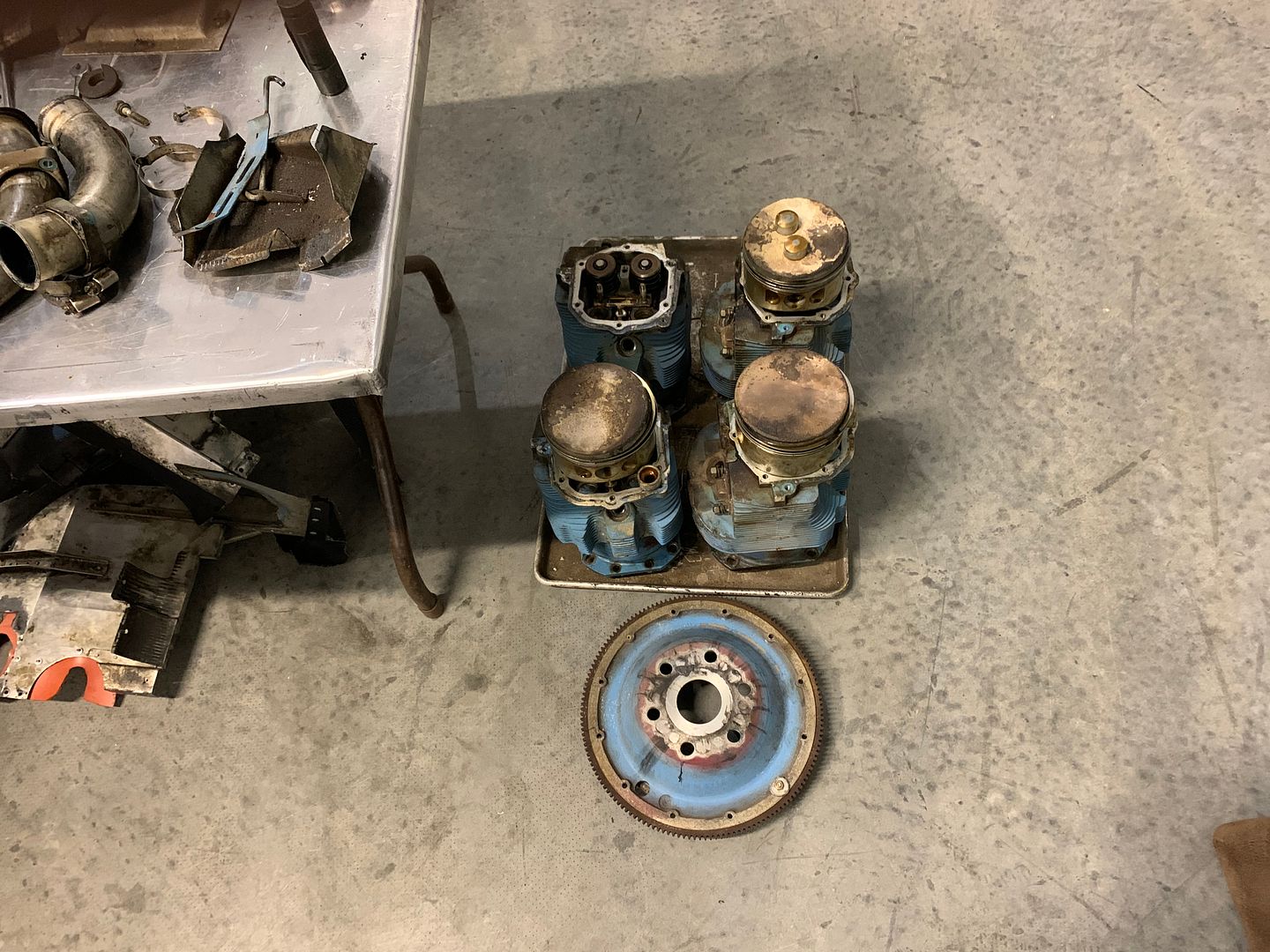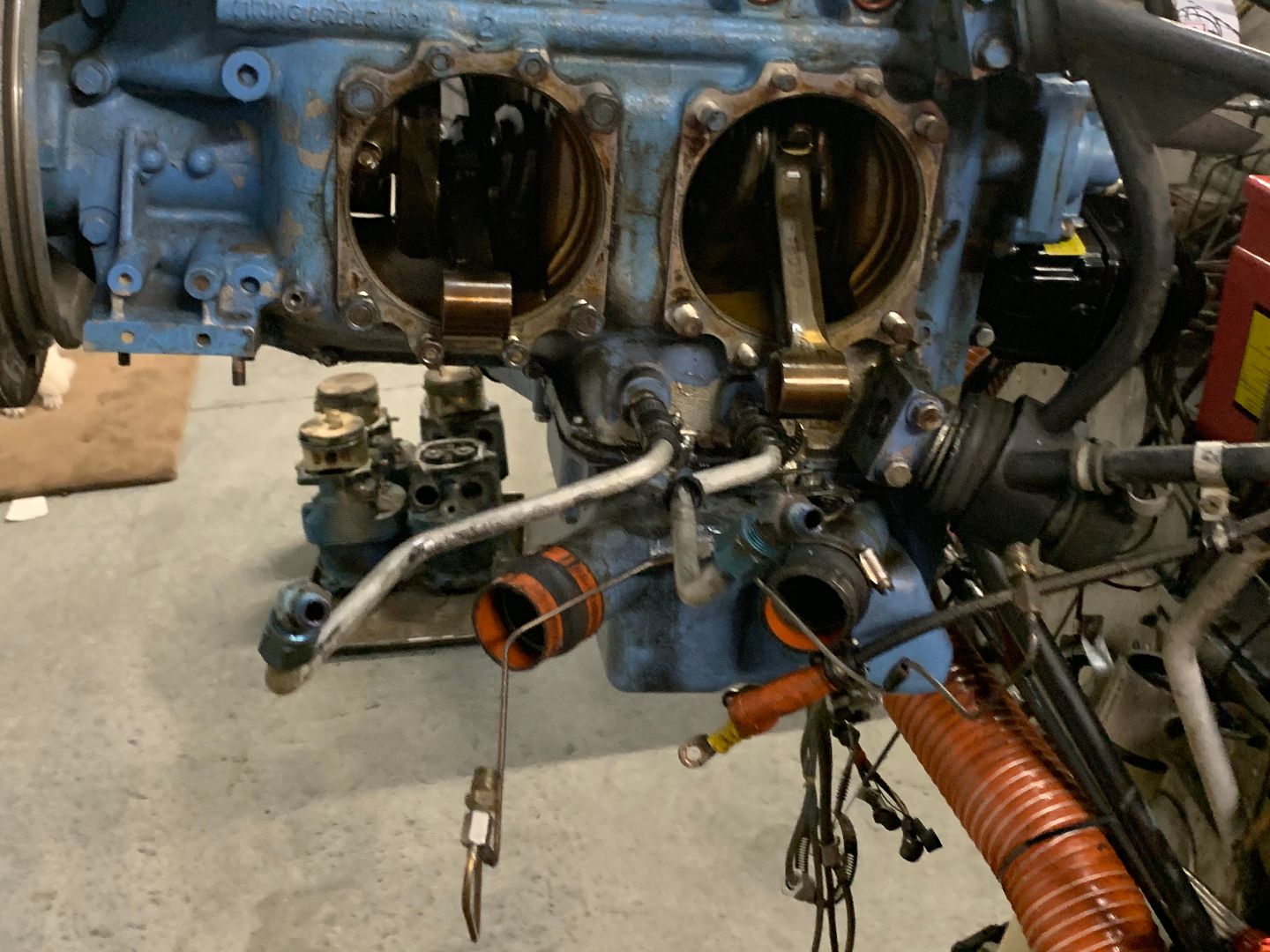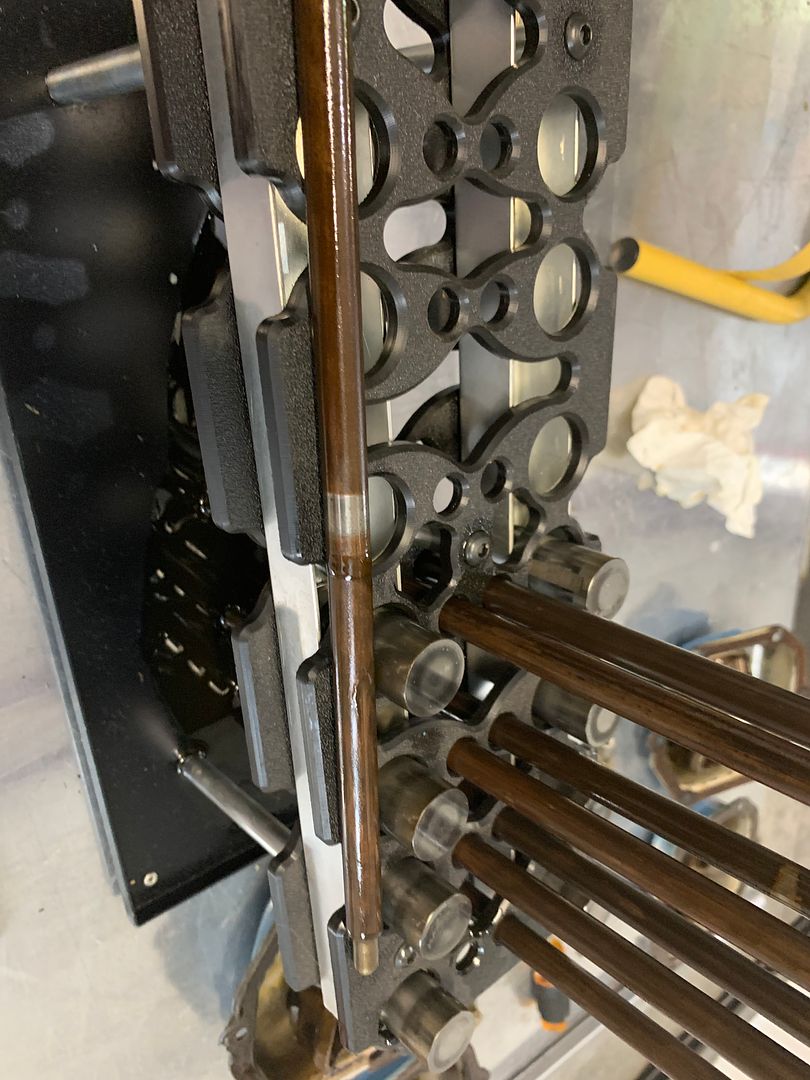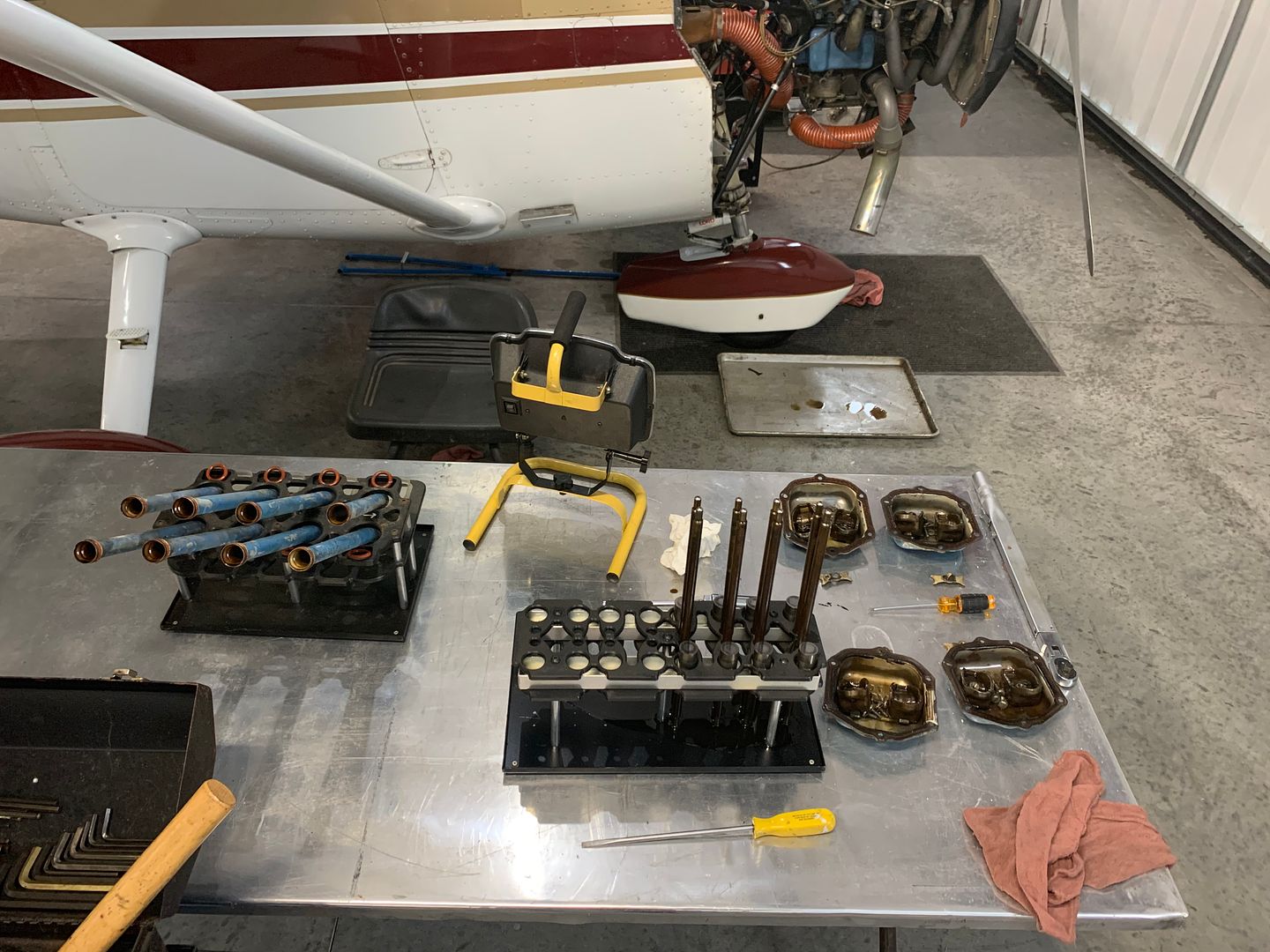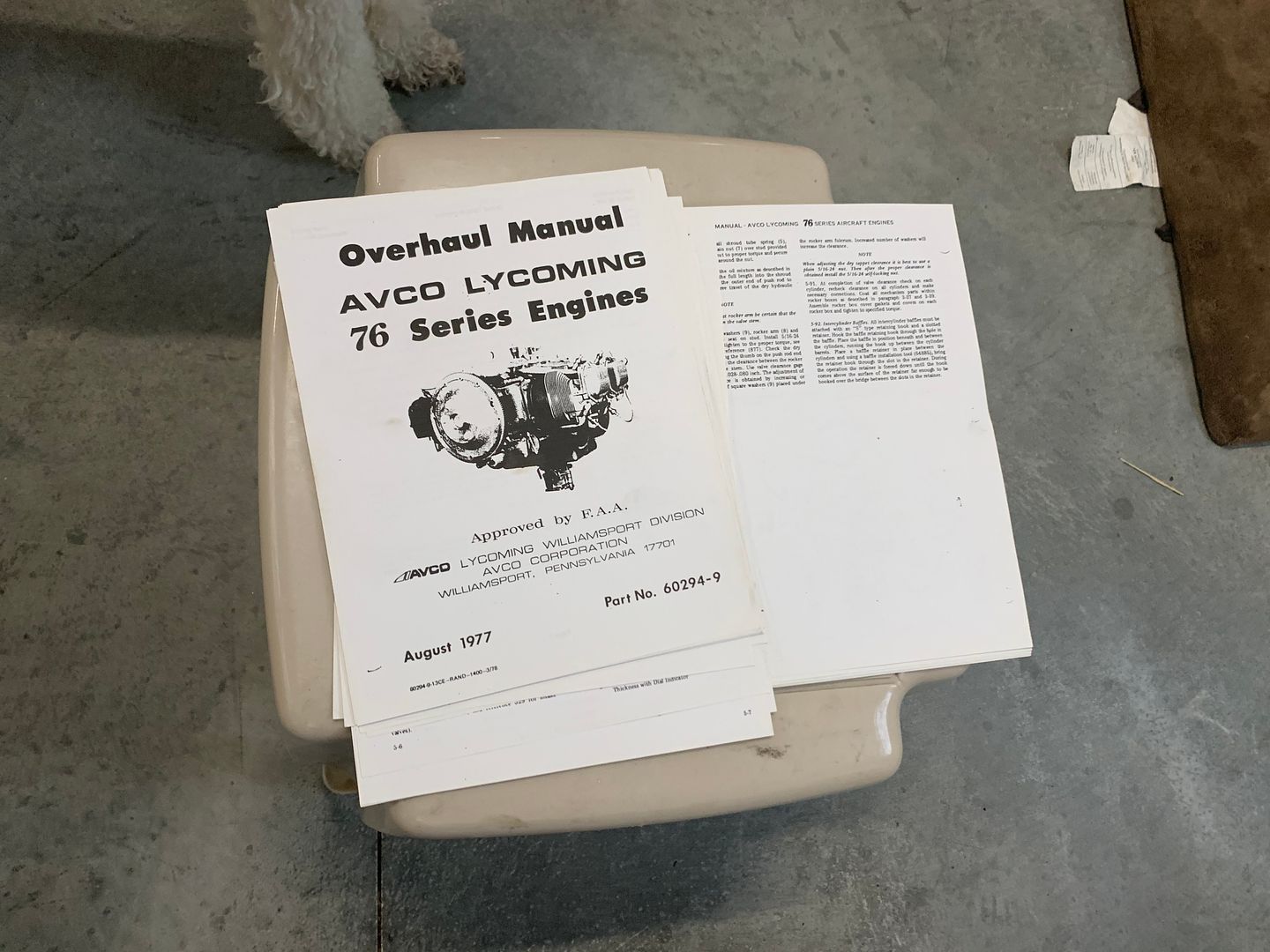Jeeeeezzzezzzz! If my old mentor saw connecting rods laying like that, he would have torn me a few new ones!! "Did they drop? Are they marked? What the %$^& are you doing, young man? Jeeezzzzeeeezzz!" The whole time his cigarette hanging from his mouth, ash almost up to his lip, fishing for another cause his young apprentice is stressing him out! Learned a lot from him, both positive and negative.

I will try to make this a short story.
I pulled the lifters to check their condition because I could. They were somewhat questionable and I had 2 low clys.
So the original plan was to have the motor overhauled by a local shop. So I removed the motor from the airframe to take it across town. I asked the shop if I could have the old cyls back for some hangar swag as my buddy calls it. They said no they can't return the clys unless they make them unusable. They suggested if I wanted the cyls to remove them before I bring them the motor for overhaul.
So I put the motor back on the plane and removed the clys not expecting to ever put it back together.
I was having second thoughts about the overhaul because it was going to need a crank because of pits in the crank snout. FAA AD 98-02-08. They said it would take 7 weeks to overhaul, this was Jan 2020 the beginning of covid19. I knew it would take longer to overhaul especially if I needed a crankshaft.
So after some thought and price comparisons I decided to order a zero time rebuilt motor from Lycoming because I knew I would get a fresh crankshaft. Lycoming said it would take 7-9 weeks to get the rebuilt motor but I did not believe that. I knew it would be longer and it was, took 12 weeks to get it in April 2020.
So I decided to put the old motor back together so I could keep flying while waiting for the rebuilt motor from Lycoming. The old motor ran great and the oil consumption got way better. Now I was sorry I ordered the rebuilt motor. I flew the old motor as much as I could which was right at 100 hours in 5 months time. I had to get my core back within 90 days, otherwise I would have flown the old motor more. The motor was 41 years old.
So during the 4th of July weekend 2020 I swapped motors and now have 289 hrs on the new motor. I did install new vibration mounts and a few other things at the same time. Things like oil and fuel hoses, scat hoses, starter etc were replaced in the previous year.
So that is why those poor rods were abused. As it turned out the old rods and cam and lifters, rings held up just fine for another 100 hrs. I am pretty sure the old motor would have made it to TBO and probably 2400 hrs. I ran the old motor to 1772 hrs. I even sent a oil sample out to be tested with 100 hrs on it when I took the old motor out for the final time. I didn't bother to change oil at 50 hrs and ran it to 100. They said the oil was fine even at 100 hrs after I put it back together. Oh well live and learn.
My rebuilt motor burns 1 qt every 12 hours now. I try to fly 4-5 day a week. Last fall I flew 23 days in a row.
I did 98% of the work myself in a 95° hangar in 5 days after work. My IA did inspect all of it and he did all the safety wire and was there for the original fire up and break in.
I did get full credit for my core motor from Lycoming even with a pitted up crankshaft. The motor had to be together running within the last 12 months. So that was another reason I had to put the old one back together and fly it. Bragging again I put the old motor back together in a just a few days during Xmas week 2019 with new o rings and valve cover gaskets. Did you know that new silicone valve cover gaskets cause your silicone numbers to be high right after installation on your oil analysis?

